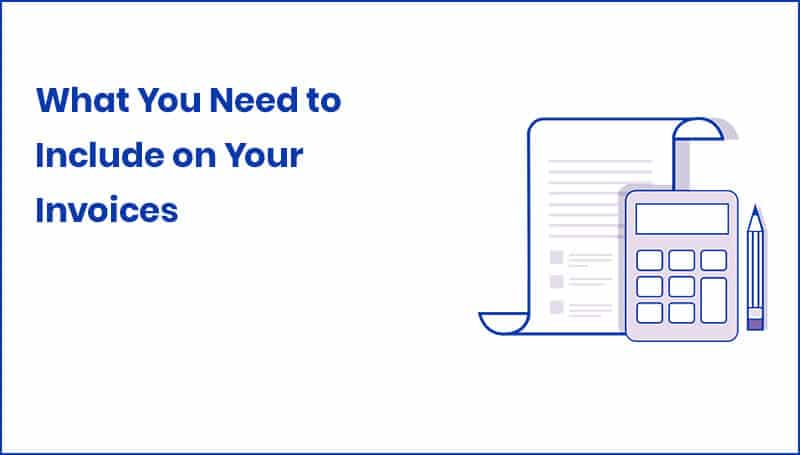What You Need to Include on Your Invoices
- HRMS (HR & Payroll) May 29,2023

An invoice is an important document for most businesses because you’ll only be paid once your business produces a suitable invoice for a customer. By preparing and issuing a business invoice promptly, you give yourself the best chance of being paid earlier.
It’s important to include all necessary information on an invoice, so here we guide you through what needs to be in your business invoice template.
You can also adapt and use our free invoice template.

First of all, you should ensure that all your invoices are clearly marked with the word ‘invoice’. This makes it clear to the customer that it’s a request for payment rather than a receipt – by reducing potential confusion, you’ll also hopefully increase the chances of being paid on time.
- Branding
Your invoice is a document that you send out from your business, so make sure that it reflects your brand – think logo, colours, fonts, and wording of the item descriptions and of your payment terms. For example, if the brand message you want to convey is “fun and quirky”, make sure your payment terms are not written in lawyers’ English.
- Legal information
There is some information that you must legally include on your invoices.
You must clearly display the word ‘invoice’ on the document. You must also include:
- A unique identification number
- Your business name, address and contact information
- The business name and address of the customer you’re invoicing
- A clear description of what you’re charging for
- The date you provided the goods or services (which is also known as the supply date)
- The date of the invoice
- The amount(s) you’re charging
- VAT amount if applicable
- The total amount owed
Sole trader invoices
If you’re a sole trader, the invoice must also include:
- Your name and any business name you use
- An address where any legal documents can be delivered to you if you are using a business name
Limited company invoices
If your business is a limited company or LLP, your invoices must show the full company name as it appears on the certificate of incorporation and its Companies House registered number and address. If you put the name of one director/member on your invoice, you must include the names of all the directors/members.
If you’re registered for VAT you must include your VAT number on your invoices, and comply with HMRC’s rules about VAT invoices. These rules include that an invoice must show:
- An invoice number which is unique and follows on from the number of the previous invoice (if you spoil or cancel a serially numbered invoice, you must keep it to show to a VAT officer at your next VAT inspection)
- The seller’s business name and address
- The seller’s VAT registration number
- The invoice date
- The time of supply (also known as the tax point) if this is different from the invoice date
- The customer’s name (or trading name) and address
- A description sufficient to identify the goods or services supplied to the customer
- The rate of any cash discount
- The total amount payable, excluding VAT
- The total amount of VAT charged, expressed in sterling
- For each different type of item listed on the invoice, you must show:
- The unit price or rate, excluding VAT
- The quantity of goods or the extent of the services
- The rate of VAT that applies to what’s being sold
- The rate of any discount for that item
And if you issue a VAT invoice that includes zero-rated or exempt goods or services, you must:
- Show clearly that there is 0%, or no, VAT payable on those goods or services
- Show the total of those values separately
Price
It’s important to make sure “The Price is Right!” because otherwise, you could find yourself in the very embarrassing position of either having to ask your customers for more money or give them some back.
When you include your quote in your invoice, make sure you use your most recent pricing – and don’t forget any discounts or special offers that you might have promised to all your customers or to just this particular customer.
Description
Avoid queries from customers by making the description on the invoice of what you are selling them as clear as you can. If a customer has to phone up to query an invoice, they may see this as poor service on your part, and it may also mean they take longer to pay.
A date for the invoice
This will generally be the date on which the invoice is created, not necessarily the date the goods or services covered by the invoices were provided.









 Saudi Arabia (English)
Saudi Arabia (English) United Kingdom
United Kingdom Global Site
Global Site